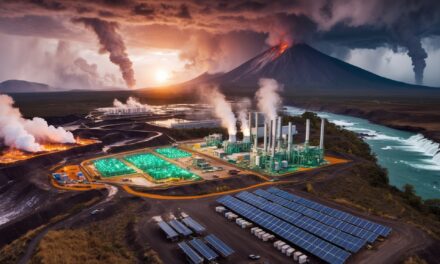When I first heard about the idea of combining Bitcoin mining with hot water reuse, I was skeptical. Bitcoin mining already has a bit of a reputation for being energy-intensive, and the thought of pairing it with a home sustainability project seemed, frankly, like a contradiction. Still, I’d been dabbling in small-scale mining with a single Phase 2 miner in my garage, so I decided to dig deeper. What I discovered surprised me—and it might just be a game-changer for small homeowners and even builders focused on green solutions.
The concept is simpler than you’d think: instead of letting all the heat generated by the mining rig go to waste (and believe me, there’s plenty of it), you capture that energy and reuse it to heat water. This isn’t just about cutting down on energy waste—it’s about creating a long-term sustainability solution that benefits both the miner and the environment. For someone like me, who loves experimenting with home innovations, this felt like uncharted territory where cryptocurrency meets eco-conscious living.
In the beginning, my setup was modest—a single Phase 2 miner running in my utility room. Surprisingly, with just that, I was able to integrate a hot water recovery system that helped heat my small home. The miner’s heat was rerouted into a thermal energy system, where it pre-heated my water tank. I quickly realized that this wasn’t just effective; it was efficient. My water heater didn’t have to work as hard, my electricity bills leveled out despite the mining rig’s usage, and I was earning Bitcoin in the process.
This approach has so much potential for small homeowners like me who want to balance technology with sustainability. Batch builders—those creating eco-friendly homes or small developments—could also benefit greatly. Imagine marketing a new home with built-in Bitcoin mining that helps reduce utility costs while offering optional passive income. It’s not just about decentralizing finance anymore; it’s about decentralizing energy use and creating smarter systems at home.
In this case study, I’ll delve into how I built my setup, the cost-benefit analysis of running a miner as a dual-purpose tool, and some of the challenges I faced along the way (spoiler: you’re going to want good ventilation and thermal management). I’ll also answer common questions I’ve gotten from friends and neighbors, like “Doesn’t it make your house too hot in the summer?” and “Is it really worth the effort?” The results might surprise you.
Lastly, as I started sharing my experience, I realized that the implications of this extend far beyond just my little corner of the world. A whitepaper I came across recently explored how scaling this concept—integrating crypto mining with energy reuse—could transform industries like agriculture, manufacturing, and more. It’s a fascinating overlap of two seemingly unrelated worlds: cryptocurrency and sustainable design.
So, whether you’re dabbling in crypto, building your dream eco-home, or just looking for innovative ways to cut down on your energy bills, this is a concept worth exploring. It’s not just about mining Bitcoin—it’s about mining smarter, living greener, and rethinking how we use the resources from modern technology. Who knew a single rig in my garage could lead to such a powerful sustainability lesson?


